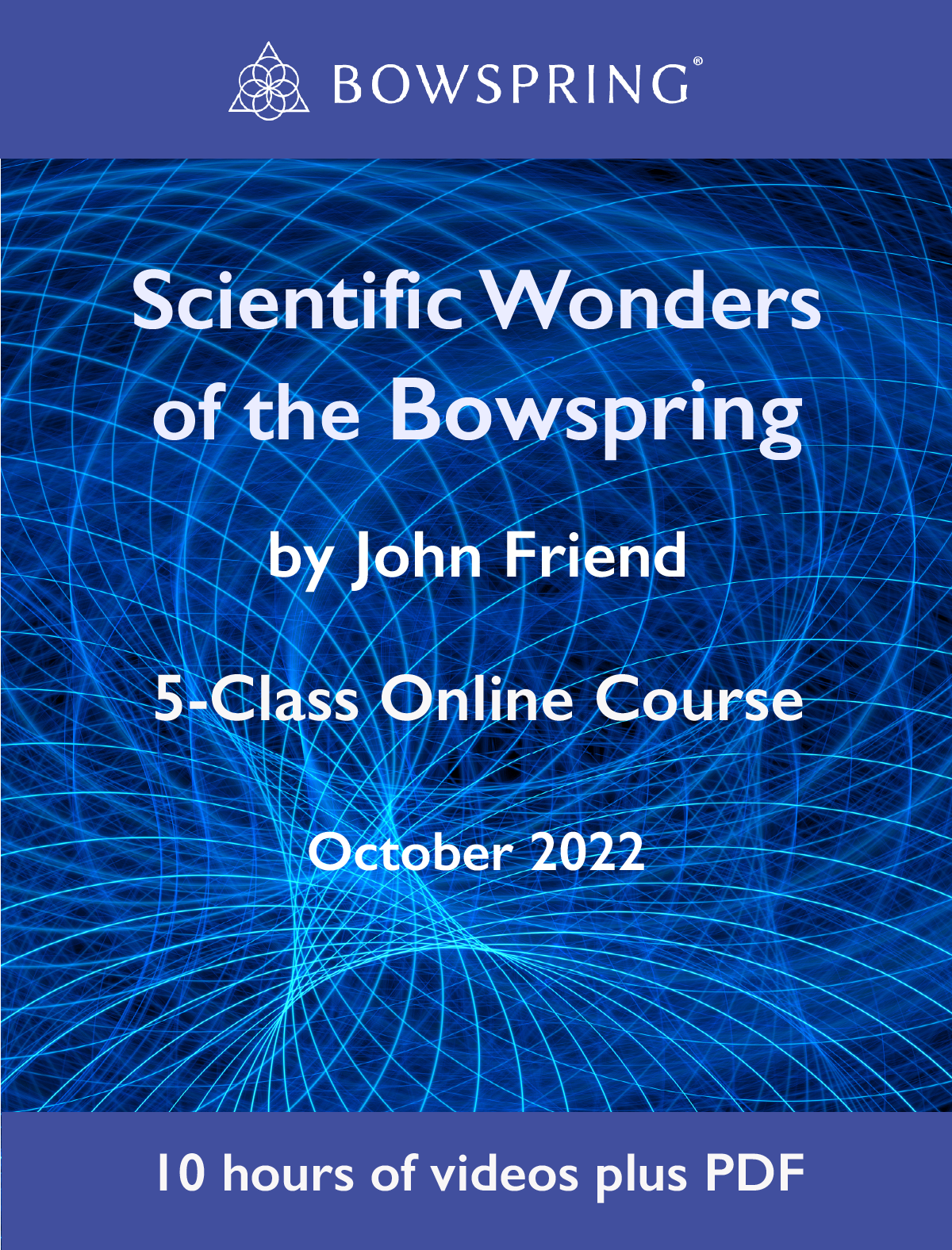The Scientific Wonders of the Bowspring
What is the scientific basis of the Bowspring method?
How and why does the Bowspring work to optimize functional movement, increase athletic performance, relieve chronic pain from injury, and provide outstanding therapeutic benefits?
How does the current science on fascia help explain why the Bowspring wavy alignment is so powerful for our mind-body health?
This 5-class Bowspring online course with John Friend answers these questions plus offering students of all-levels various Bowspring exercises, dynamic postural sequences, and breathing practices for our highest health and wellness.
The Bowspring method is a mind-body alignment technology that when applied, positive health results are predictable, particularly for functional movement and athletic performance.
The main hypothesis is that when the Bowspring alignment is applied to any functional movement, beneficial results are experienced immediately and into the future. The evidence is shown in increased athletic performance, ease of range of movement, and positive therapeutic effects when the Bowspring is practiced. We now have 10 years of evidence from thousands of students in over 17 countries who have directly experienced the power of the Bowspring.
Most interesting is that the alignment of the Bowspring contradicts and challenges the current standard model of biomechanics, which is the basis for the old models of physical therapy, modern postural yoga, and a lot of athletic training. Bowspring is part of an emergent paradigm in biomechanics that emphasizes waves, curves, and spirals of alignment, instead of straight, linear, and up and down alignment. Instead of focusing on only the linear alignment of muscles and bones, the new model of biomechanics considers fascial alignment as a primary factor in optimal functional movement and therapeutic effect. Also, instead of seeing the physical body as a solid, compressive structure, the emergent paradigm of biomechanics regards the body mainly in terms of fluid dynamics as our fascia is composed of 80% water.
***
5 Video Course:
Video 1: The Science of Postural Alignment — Standard Model vs. Emergent Paradigm.
In the first class of this course, some of the main tenets of the classical science view of biomechanics are challenged and shown to be invalid for dynamic postural alignment. The standard model of biomechanics rests on the view that our skeletal and muscular structure of our physical bodies follows the law of Newtonian physics. The Standard Model is linear and regards the best posture, the most aligned standing posture to be one of uprightness in which the head, neck, ribcage, hips are vertically stacked in order to diminish the shearing forces of gravity.
In contrast, the emergent paradigm of mind-body alignment doesn’t regard the physical body as a solid, compressive structure, but instead sees the body in terms of the fluid dynamics, best described by wave forms, curves and spirals. Furthermore, the new biomechanics uses the scientific principles of biotensegrity, in which tension and compressive forces in the body can be balanced to create lightness and structural strength. The Bowspring method provides an algorithm, a postural formula to create maximum tensegrity in any posture or movement, in which beneficial results can be predicted with high level of accuracy.
Topics covered in this first class include the waves of the spine; the double-S wave of the posterior chain of myo-fascia; and biotensegrity.
Video 2: The Scientific Wonders of the Roots – Feet, Legs, and Hips
This class focuses on the new science of optimally aligning the feet, knees, and hips for therapeutic benefits and for maximizing lightness and power of any functional movement. Some of the topics covered in this class include, the arches and waves of the feet; the Hollows and Mounds of the feet; the spirals of the legs – the fascial coil of the upper and lower legs; the Apple of the hips; the triangular trampoline of the pelvic floor; and the joint hydraulics of the knees and hip
Video 3: The Scientific Wonders of the Wings – Hands, Arms, and Shoulders
This class examines how to align the Wings to maximize the length of the spine and the expansion of the ribcage. Topics covered in this class include, the spring of the hands when weight-bearing on the arms; the spirals of the arms – the fascial coil of the upper and lower arms; the rotation of the ribcage – left and right direction, while engaging the shoulders; and the Wing Spiral.
Video 4: The Scientific Wonders of the Apple-Cores – the lower back, abdomen, and neck.
The focus of this class is the science of postural alignment for the lordotic curves of the lower back and neck. Dynamic postures and exercises focus on creating optimal curves in the lower back and neck so that the posterior chain of fascia and muscles can have optimal engagement to create tensegrity, affording lightness and power of movement.
Day 5: The Scientific Wonders of the alignment of the Head and Neck
How does the alignment of our head affect our ability to move and how does our head alignment affect our overall health and well-being? How are these effects explained by the new paradigm of alignment described by the Bowspring? The head is the pinnacle of the spine, and its alignment connects to all other subsystems of alignment – the spine, ribcage, the Wings, Roots, and Apple-Cores.

